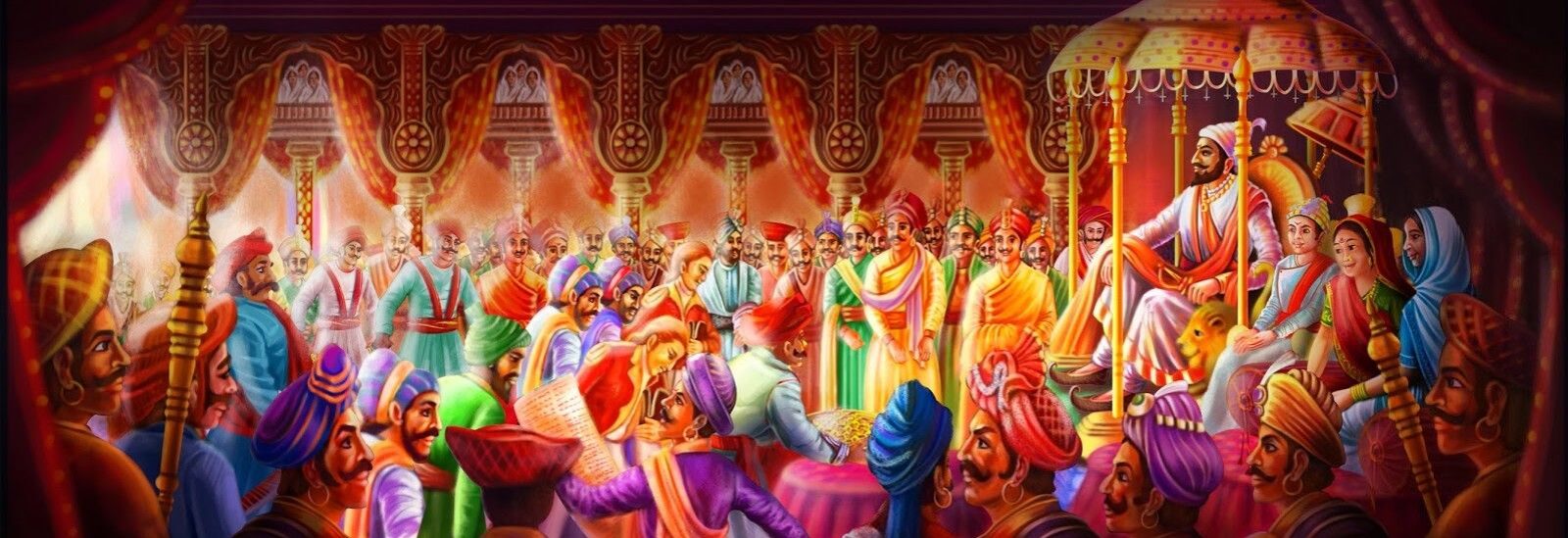Shivaji Raje abolished the collection of revenue directly and ordered Patil/Kulkarni to collect the revenue from farmers and pay revenue share of Deshpande/Deshmukh to them and remaining revenue to the state treasury. In this way he destroyed the power of the Vatandars. Although the responsibility for the administration of the state was given to the Pradhan Mandal, the execution of the administrative work was entrusted to certain administrators, i.e. Chitnis, Phadnis, etc. All the writers in the state were under the control of these officials. Therefore, from the beginning, care was taken not to allow the Deshmukhadi rulers to gain power. Similarly, Vazeers acting independently in Islamic sultanates were prone to rebellion; In order to prevent such a disaster from happening, the system of implementation of the actual governance was kept separate and specially kept in the hands of the government.
In the implementation of this administration, which is a big matter of deposit, full precautions were taken by the system of Phadnis. There was a deposit account under the supervision of Amati. A ‘Mujumdar’ is one who authorizes all kinds of expenditure. As per Huzur’s order, he should inquire about the transactions that would come to Phadnis and guide them in their implementation. There were sub-accounts or divisions in the Phadnis like Sabnis, Bakshi, Karkhanis, Potnis, Daptardar, Jamenis etc. Government officials also required the written approval of the Phadnis in the act of making deposits and expenditures. Therefore, the income and expenditure tables of all the factories and officers have to come for audit.
The Swarajya was divided into sixteen parts for the purpose of revenue collection. These sixteen parts were also divided under the term ‘Taraf’. After that the Taraf were also divided under the term ‘Mauj’. A revenue officer was called ‘Subhedar’ while a revenue officer in Taraf was called ‘Karkoon’. Appointments, transfers and dismissals of Kamavisdar, Maweledar and Sarsubedar are done by Chhatrapati. Subhadars had the power to decide the number of Kamavisdars, their wages, reduction or reduction of the advance to be paid to them, etc. Subhadars also had powers to appoint and remove Phadnis.
or goto Part I, Part V, Part VI, Part VII, Part VIII, Part IX, Part X, Part XI, Part XII, Part XIII, Part XIV, Part XV, Part XVI, Part XVII, Part XVIII


Pingback: Revenue System (Part XII – Direct Taxes) – Chatrappati Blogging
Pingback: Revenue System (Part IV – Departments and respective Authorities) – Chatrappati Blogging
Pingback: Revenue System (Part XVIII- Farm, Farmer and Revenue System) – Chatrappati Blogging
Pingback: Revenue System (Part XI – Tax Structure – Introduction) – Chatrappati Blogging